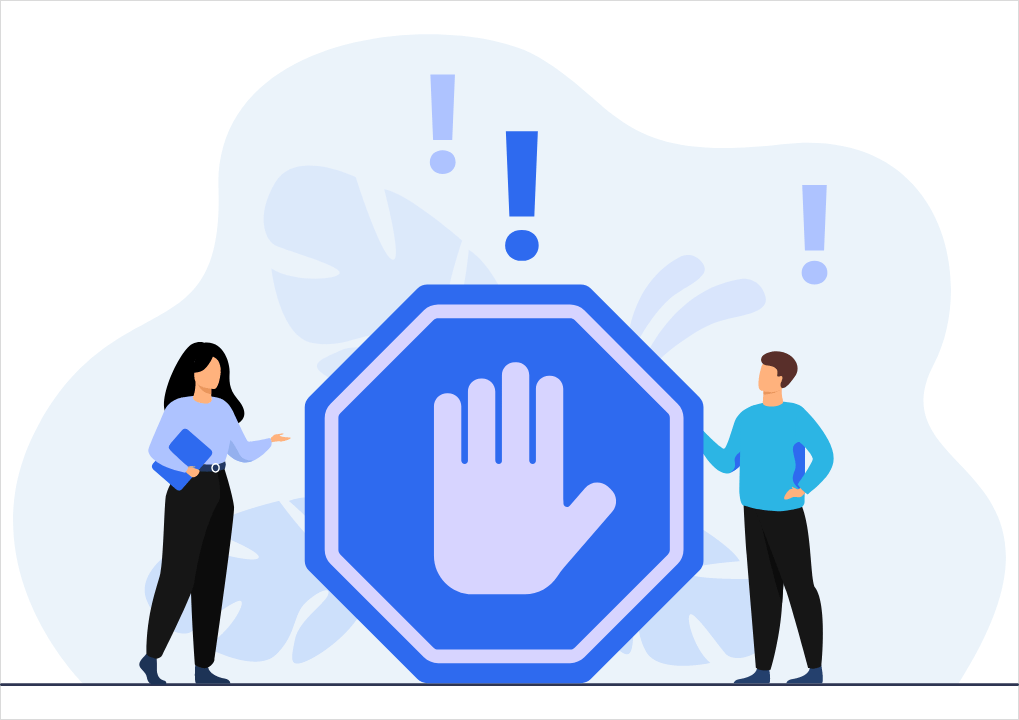Did you know that as per Ad Fraud Statistics for every $ 5 spent on digital ads, Click fraud takes up $1? Costing advertisers more than $ 35 billion in global ad fraud losses!
Phew! Take a moment to let that sink in…
If you are running any kind of Pay Per Click advertising on Google Ads then click fraud might have been an issue you might have faced over some time.
Click fraud can be an annoying issue for every PPC Marketer out there, every account suffers from it no matter what Google, Bing, Facebook, PPC Advertising company does, it is a fact of life.
As per Google, what they classify click frauds as invalid clicks, meaning clicks on ads that Google considers to be illegitimate or unintentional clicks resulting from malicious software or bots.
First, you need to identify this problem, if you look into your Google Ads account you will also be able to see the number of invalid clicks you are getting for the ads you are currently running.
These invalid clicks will not be charged to your Google ads account as Google has identified and already classified them as invalid clicks. Thanks, Google!
Keep a close eye on your Google Account Analytics
Keeping an eye out on your website analytics is important to detect bots and click frauds on your campaign, even though they are becoming cleverer, there are a couple of things you can look out for:
∙ Bounce rate –generally bots and crawlers bounce quickly from websites, usually, a high bounce rate is a good indicator that you may have some invalid clicks on your site.
∙ IP Address– if you see a suspicious IP address repeatedly accessing your website you might want to consider blocking that address from your website.
∙ Session Duration –a session duration of 2 seconds and below can suggest bot activity on your site indicating suspicious activity or bot-like behavior.
So where can these clicks be coming from?
- Humans
- Bots & Crawlers
- Click Farms
- Fraudulent websites
In this article let’s look at a few ways how we can reduce the risk of click frauds so that you get a higher return on investment for your Google Ads campaigns.
- Keep your campaign structure tight– since broad match is so broad try to avoid using Broad Match Keywords where ads will be shown on searches that are irrelevant to your target audience. Instead, try using Phrase Match Keywords which will reduce click frauds quite a bit we believe.
- Excluding IP Addresses – Another way to avoid getting unwanted clicks that are costing you is excluding IP addresses. For example, if you are running a big company or in charge of Ad Words for a multinational company that has got hundreds, if not thousands of employees who might regularly check your website’s organic search results, where your ads sometimes show. Then we would also recommend you exclude your company’s network IP address since unwanted ad impressions and inadvertent clicks are costly. Obviously, that does not classify as click fraud, but your CTR won’t be affected and you won’t get any unintentional clicks.
- Retargeting – You may want to focus your efforts on retargeting people that have already shown interest and visited your website. The next time that they visit another website or social media platform that is showing ads from your campaign, they will be qualified to see your ads.
- Click Fraud Prevention Software – There’s also third-party software with affordable payment plans such as ClickGUARD, Click Cease, PPC Protect, and Ad score which offers insights into PPC traffic quality, fraud filtering, and click fraud reports.
- Utilize Managed Placements – Managed placements allow the advertiser to choose exactly which sites your ads are going to be placed on, allowing you to select which domains which are the most relevant to your audience and their link to your brand, products, or services, or those websites which have proven successful in bringing in clicks and conversions in the past.
- Split Test with CPM Ads – If it’s for a local campaign around a 5 or 10-mile radius, you may want to split test your ad with a CPM Ad. If running campaigns on a cost per thousand basis risk reduces no matter how many fraudulent clicks you get, you won’t be charged per click, because you are not bidding per click, you are bidding per thousand impressions, you can get a lot of eyeballs on your brand and from the branding point of view.
- Limit your Exposure – Target your ads in specific countries, unless you are highly confident that there is potential in these territories. Countries that are poverty-stricken or have lower labor rates usually top the list when it comes to click farms and fraudulent click sources.
Final Thoughts
Google comes up with sophisticated systems in place for detecting and reducing click frauds from competitors, bots, and other fraudulent sources. Google’s. Advanced algorithms detect and filter out invalid clicks in real-time before advertisers are even charged but no matter how sophisticated or brilliant it is, there will always be click frauds, which will happen.
Friendly Reminder – If you are clicking on your competitor’s ads on purpose, don’t do it because it’s not the right thing to do and you wouldn’t like it if the same would’ve been done to you.
“There goes the saying what goes around comes around” – Karma
If you have suffered from click fraud, let us know your experience down in the comments below and, what tactics have you used to eradicate malicious clicks on your accounts?






